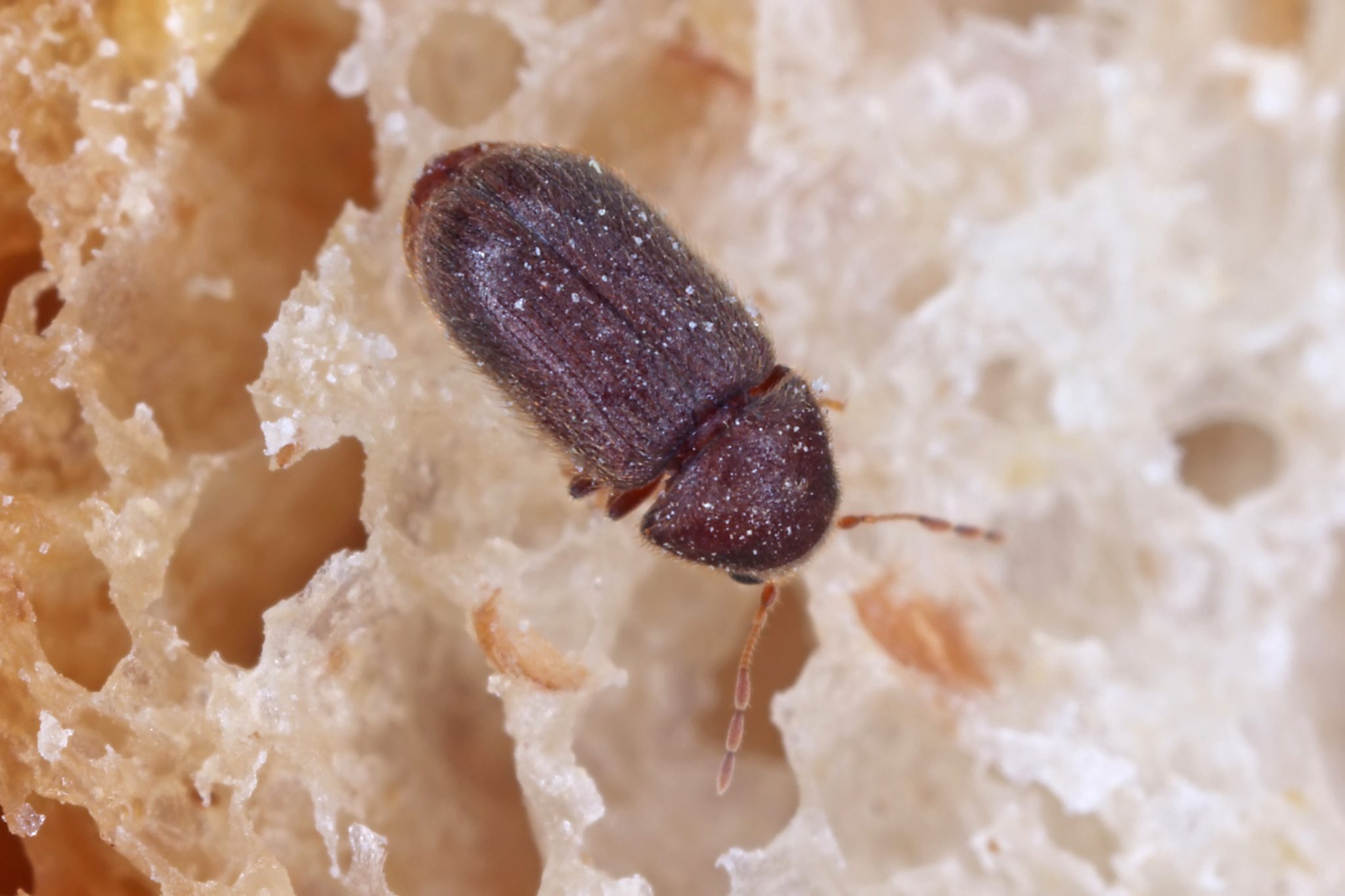Home

Summer is the peak season for mystery bugs in the house. Frequently, homeowners may see large numbers of small brown beetles occurring in the home. They can be anywhere: in the kitchen, bathroom, bedroom, or living room. The most common small brown beetles are the drugstore beetles, also known as bread beetles or biscuit beetles. They are one of the most common stored produce pest insects in the United States. These beetles get their name from their love of stored products and, oddly, prescription drugs.
Drugstore beetles eat a variety of stored and packed plant and animal foods including the following:
- Bread
- Flour
- Pet food
- Cereals
- Baking mixes
- Crackers
- Dried fruits
- Nuts
- Cracked grains
- Hot spices
- Drugs
Nonfood items they feed on include wool, hair, leather, bookbindings, horn and museum specimens. Drugstore beetles will eat anything but cast iron.
Are the insects in the home drugstore beetles?
Unfortunately, drugstore beetles can often be difficult to see. The adult beetles are usually noticeable first. Only about 2 to 4 mm in length, the adult beetles are extremely small with a reddish-brown coloring. To get a correct identification, you will need a good hand magnifier to examine them. The beetles have fine grooves along the wing cover, and their antennae have a three-segmented club at the end.
They are often confused with another species, cigarette beetles, that are also small and brownish and often attack similar stored products as drugstore beetles do. However, cigarette beetles have saw-like antennae and a relatively smooth wing cover. Their larvae are extremely hairy, with a large distinct head. Although they look similar, the two beetle species do not share the same sex pheromone and require different monitoring practices.
Where to Find Drugstore Beetles
Due to their love of stored products, they are commonly found year around in home pantries, warehouses, restaurants and kitchens. They are also found in spilled food in cracks, crevices, or seams on the floors in shipping containers, rail cars, and delivery trucks.
Their larvae spend their entire life inside stored products eating, both animal and plant origins.
The adult beetles, on the other hand, can fly, though you may often see them crawling around. They are attracted to light. That is why drugstore beetles are seen in bathroom, living room, bedroom and office, away from where the food sources are. Adult beetles leave the food to seek mates and explore new food sources. Adult beetles eat the same foods as larvae, but they can also feed on pollen and nectars outside the home. They enter homes attracted by light at night and seek stored food inside homes. However, most often they are brought into homes in infested grocery products and dry animal food.
While they may not be a welcome visitor in your house, drugstore beetles are not harmful to humans, animals or structures. However, the larval stage feeding accounts for the greatest amount of damage.
Controlling Drugstore Beetles
Preventing and controlling drugstore beetle infestations in homes is relatively simple.
- First and foremost, do not bring them in. All food packages, containers and items should be checked for infestation.
- If adult drugstore beetles are found wandering around in the home, it is essential to search thoroughly for the larva’s food-source.
- In order to fully get rid of the drugstore beetles, grains and dry food items should be stored in air-tight containers, or be placed in the refrigerator or freezer. Heavily infested items should be wrapped in heavy plastic, taken outside and thrown away. Uninfested items should be placed in the refrigerator or freeze.
- To prevent reinfestation, clean up spilled stored products, your fireplace, pantry, underneath your oven, refrigerator, and tables. Thoroughly vacuum and clean areas where the contaminated items were stored.
- With suitable hygiene, eradication is simple. Insecticides should only be used as a last resort.
- Consider using drugstore pheromone traps to make sure the infestation has been fully eradicated. These traps contain a scent that attracts the adult beetles and they become stuck to the adhesive inside. The traps can also detect the beetles when they are brought into homes.

